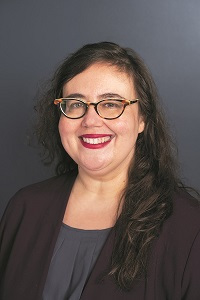Counting on Equity | Editorial
The 2021 ParkScore rankings, conducted annually by the Trust for Public Land, show a significant shakeup. It’s not because of major changes to the parks in the past year, but to the scoring: this year the Trust added equity to its decision matrix, which includes access, investment, amenities, and acreage. The resulting change in the lineup of top-scoring park systems shows how inadequate measuring overall access is for learning whether everyone is well served.
Scoring parks on equity has lessons for libraries
 Big city parks systems change slowly. Not surprising, since they involve governmental processes and expensive real estate. So it’s notable that the 2021 ParkScore rankings, conducted annually by the Trust for Public Land, show a significant shakeup. It’s not because of major changes to the parks in the past year, but to the scoring: this year the Trust added equity to its decision matrix, which includes access, investment, amenities, and acreage. The resulting change in the lineup of top-scoring park systems shows how inadequate measuring overall access is for learning whether everyone is well served.
Big city parks systems change slowly. Not surprising, since they involve governmental processes and expensive real estate. So it’s notable that the 2021 ParkScore rankings, conducted annually by the Trust for Public Land, show a significant shakeup. It’s not because of major changes to the parks in the past year, but to the scoring: this year the Trust added equity to its decision matrix, which includes access, investment, amenities, and acreage. The resulting change in the lineup of top-scoring park systems shows how inadequate measuring overall access is for learning whether everyone is well served.
The new metric considers the per-person ratio of public park space between neighborhoods of color and white neighborhoods, and between low-income neighborhoods and high-income neighborhoods, based on census data, as well as the percentage of people of color and low-income households living within a half-mile walk of a park. The Trust uses ESRI software to evaluate not just an as-the-crow-flies radius but barriers to walkability like highways.
The disparities the Trust found with its new measure are glaring: Linda Hwang, the Trust’s director of strategy and innovation, told me BIPOC neighborhoods have 44 percent less park space per person compared to majority white neighborhoods. The Trust found a similar disparity between low-income and high-income neighborhoods.
I find the Trust’s decision to add equity to the rubric an exciting development. It reflects how revising existing criteria to center equity can amplify examples to learn from, and highlight where there is more work to be done.
In the short term, the Trust’s data can help libraries that partner with parks departments make sure that library programming is situated as equitably as possible.
More ambitiously, I’d like to see the library field apply this measure of equitable access to library locations. While the idea of reinventing such a massive wheel is daunting, we wouldn’t necessarily have to: while ParkScore applies only to the country’s 100 largest cities, the Trust also maintains a website called ParkServe, which, Hwang says, layers many publicly available datasets to keep track of 14,000 cities and towns. It shows not only where their current parks are, but where their areas of need are, concentrations of children or people who report lack of physical activity or mental health concerns, even urban heat islands. The Trust recently added the location of all K–12 schools.
Libraries aren’t yet in the mix, but they could be: A partnership between the Trust and one or several libraryland organizations could layer the public library outlet datafile, which tracks the location of every main and branch library in the United States, into the existing ParkServe mix. That would allow the field to better assess where we stand on equity of access, track progress, and help libraries find comparable institutions to serve as benchmarks as they work to improve.
Individual library systems already conduct such analyses locally when considering where to place a new branch, or to send bookmobiles or pop-up libraries, as have LIS researchers and education scholars such as Susan Neuman, who examined book deserts, that is, areas that lack both libraries and bookstores. Such a partnership would mean more libraries would find it feasible to do the same.
When the Trust finds areas that need more accessible parkland, it sometimes helps cities partner with schools to turn schoolyards into parks that are open to everyone after school hours. As libraries increasingly develop their outdoor spaces—see “Growing Practice” (p. 36ff) and the May issue—there’s a natural opportunity for libraries to become partners in this work.
There’s also an adaptable model here for public libraries, many of which are already exploring space sharing with retail, residential developments, recreation centers, and schools. Data could drive a more systematic, proactive effort to identify such opportunities in underserved areas if budgets don’t allow for a new stand-alone branch. As with the Trust, schools are a natural partner. So long as the public library is not viewed as a substitute for school library service, such collaborations can benefit both partners, and the community they serve. Connecting the dots of existing data in new ways has the potential to reveal a wealth of opportunities for increasing equity of access.

RELATED
ALREADY A SUBSCRIBER? LOG IN
We are currently offering this content for free. Sign up now to activate your personal profile, where you can save articles for future viewing









Add Comment :-
Comment Policy:
Comment should not be empty !!!